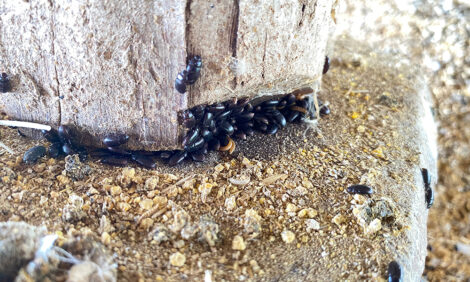



Systematic Evaluation of In-House Broiler Litter Windrowing Effects on Production Benefits and Environmental Impact
In a collaboration by several US universities, windrow treatments had no negative effects on litter quality with regard to agronomic applications. Litter moisture content decreased both the control and windrow treatments, which is likely to be benefit broiler health.In-house windrowing of broiler litter between flocks has been adopted by many complexes and producers to reduce pathogens and improve litter quality, write Dr Yi Liang, Assistant Professor at the University of Arkansas and co-authors there and at the Oklahoma State University and Mississippi State University in a summary report for US Poultry & Egg Association.
They continue that challenges and uncertainty exist with regard to the effect of litter moisture contents on the heating process, and higher litter temperature on potential ammonia volatilisation. Additionally, high mineralisation rates may lead to nutrient transformation, including increased soluble phosphorus in the litter.
The objectives of their study are to:
- investigate the effect of litter windrowing between broiler flocks in reducing pathogens, and
- quantitatively monitor and compare the organic matter stabilization, cumulative ammonia emission, and nutrient transformation from the litter windrowing and litter conditioning process.
In regard to windrowing, two frequently asked questions concerning management choices prior to windrowing are: 1) whether to de-cake or not; and 2) whether to add water or not. Both are related to moisture concerns. Literature suggests that incorporating caked litter helps retain moisture and avoid the extra labour cost and fuel expense associated with de-caking. Therefore, all trials were run without de-caking.
In order to determine if water addition was necessary before each trial, litter samples were collected before birds were removed to allow for moisture determination in the laboratory. Nine hundred gallons of water was added to one of the windrow houses in each of Trials 3, 4 and 5. With 900 gallons of water, it is expected to increase litter moisture content by 3.5 per cent after two flocks on the same bedding but about two per cent after five flocks.
A significant decrease in litter moisture content occurred after seven to 13 days of windrowing although moisture content of windrowed litter with water addition was slightly higher than those without water addition. However, piles with water addition had higher temperatures and stayed hot longer.
Clostridium spp. populations were reduced to below the detection limit in treatment groups from days 0 to 7 although the reductions were not significant. Escherichia coli populations were reduced to below the detection limit from days 0 to 7 although no treatment effects were observed. The lack of significant differences illustrated in Clostridium and E.coli populations may have been due to a low population level recovered on day 0 and the small sample size. Staphylococcus aureus was undetectable. No significant differences of seven-day mortality were found between windrow and non-windrow houses. Windrowed houses had a lower or better paw score than non-windrowed house.
Water-soluble phosphorus increased in both windrowed and non-windrowed litter, indicating an appreciable degree of biotic and abiotic activity occurring in litter with both treatments after flocks were removed. Overall, there were no negative impacts of windrow treatments on litter quality observed with regard to agronomic applications. Both the control and windrow treatments resulted in a decrease in litter moisture content, which is likely to be beneficial to bird health conditions.
High ammonia emissions persisted after windrow spreading. Without the addition of a litter amendment, at least four days were necessary to purge ammonia with proper ventilation before chick placement. A sufficient length of downtime should be allowed if windrows are to be constructed. Alternatively, a low-dose litter amendment was effective in reducing ammonia volatilisation after windrowing.
Assuming poultry litter treatment costs $0.66 per kg, the expense of a low-dose application in a half-house brood section is about $240 per house. This compares favourably to the scenario of higher fan run-time during cold weather without the addition of a litter amendment, which could easily exceed propane usage of 100 gallons per day, per house.
The authors of this report were: Dr Yi Liang (Assistant Professor at the University of Arkansas), Dr Josh Payne (Adjunct Associate Professor, Oklahoma State University Cooperative Extension Service), Dr Chad Penn (Associate Professor, Department of Plant and Soil Sciences, Oklahoma State University), Dr Karl VanDevender (Professor Biological and Agricultural Engineering, University of Arkansas), Dr Susan Watkins (Professor, Center of Excellence for Poultry Science, University of Arkansas Division of Agriculture) and Dr G. Tom Tabler (Extension Professor, Department of Poultry Science, Mississippi State University Extension Service).
January 2013











